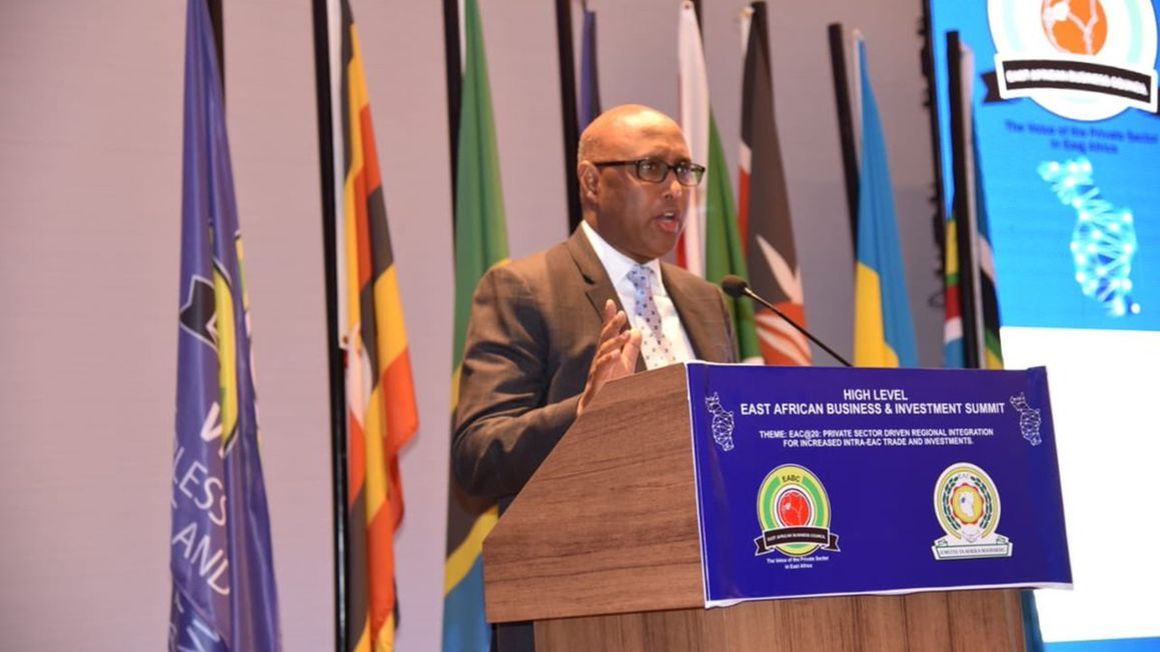
EAC Council of Ministers, Adan Mohammed
Arusha. The long awaited establishment of the East African Monetary Institute (Eami) is on course.
With the Act on its creation coming into force tomorrow (July 1), the process for its take off is set to move on.
Once established the institute will carry out the preparatory work for the creation of the East African Monetary Union (Eamu), one of the pillars of the EA integration.
This was disclosed here on Monday during the tabling of the East African Community (EAC) budget for the 2021/22 financial year.
Mr Adan Mohamed, the Chairperson of the EAC Council of Ministers said commencement of the Eami Act was gazetted in March this year.
“Official communication notifying partner states to express interest to host Eami was forwarded to them in May this year,” he said.
Operationalisation of the institute is expected to set the Community on a journey towards the single currency economy for the bloc.
The proposed institute is a precursor to the envisaged East African Central Bank as articulated in EA Monetary Union protocol.
Delivering the budget speech at the East African Legislative Assembly (Eala) sitting, Mr Mohamed outlined EAC priority areas that would boost trade in the coming fiscal year.
These include putting in place requisite measures after the May 2021 completion of a comprehensive review of the EAC NTBs Act, 2017. The review proposes a more efficient regional dispute resolution mechanism with the possibility of compensation in such scenarios.
The dispute resolution mechanisms will address the notorious non-tariff barriers (NTBs) haunting the region with intent to their removal. Another focus will be implementation of the Export Promotion Strategy 2020-2025 aimed to stimulate exports, market access and competitiveness.
Mr Mohamed, who is Kenya Cabinet Secretary for EAC Affairs, added that small and medium enterprises (SMEs) development will also be among the key priorities.
Among the projects lined up for implementation is the formulation of the sixth EAC Development Strategy (2021/2022 to 2025/2026).
The overall goal of the strategy is to transform the bloc into a stable, competitive and sustainable lower-income region by 2030.
Other objectives are attainment of the EAC single currency with the Eami Act coming into force July 1st and harmonisation of fiscal, monetary and exchange rate policies.
Preparation of the regional guidelines for compilation of harmonised statistics in the region will be finalized in 2021/2022
This, said Mr. Mohamed, will lead to setting up of EAC Open Data Portal, which will be the main dissemination tool for the regional statistics.
In the 2021/2022 fiscal year beginning tomorrow (July 1st), EAC has estimated to spend $91.7 million for operational activities and project implementation.
Out of the amount, $54.1million or 59 per cent will be contributed equally by the six partner states or raised as other internal revenues.
Some $37.6million or 41 per cent is expected to be sourced from a host of traditional development partners supporting the EAC.

No comments:
Post a Comment